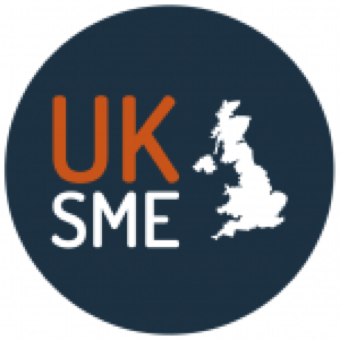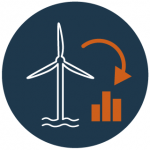Subsea inspections are vital to offshore wind, wave and tidal project developers – but they’re also expensive, time-consuming, and labour-intensive to carry out, creating an opportunity for developers of autonomous solutions that can increase reliability and confidence while cutting costs and time. Data helps developers and owner/operators make smarter operations and maintenance decisions, improving efficiency and lowering costs.
Edinburgh-based MarynSol specialises in advanced data acquisition, management and analytics solutions that can shine a light on even the darkest corners of the murky deep. “Our approach is to use marine autonomous vehicles as a survey platform,” says Jonathan Evans, the company’s Director, “delivering data that answers operations and maintenance questions, efficiently and safely.”
The company has developed SeaSmart, a sophisticated software package that automates the acquisition, processing and reporting of marine survey data and can work across a variety of autonomous vehicle platforms. Using autonomous vehicles can significantly reduce the time and costs associated with the survey mobilisation and operations. These vehicles can operate safely close to the field assets, reducing personnel risks. Surveys can be performed simultaneously with other in-field activities, ensuring the best use of vessels and crews.
However, accessing real-world operational sites for the testing and demonstration of new technologies can be a real barrier to SMEs. The Catapult is at the forefront of supporting innovative businesses and its Levenmouth Demonstration Turbine, located on the Fife coast, provides an easily-accessible platform for technology demonstration.

MarynSol tested its SeaSmart automated marine survey payload at the Levenmouth Turbine in late October 2018. Performing a successful survey of the seabed surrounding the turbine and its jacket piles, it identified potential hazards in and around the turbine and bay. It also demonstrated that its autonomous method can survey a substantial area in significantly less time than traditional methods while producing reliable, useful data. The company’s approach also means inspections can be repeated at regular intervals, allowing changes in seabed state to be monitored over time.
With its technology proven in a real-world offshore environment, the Catapult and MarynSol are now working together to survey the opportunities that exist in the ever-growing offshore wind, wave and tidal energy supply chain.
Having access to the Levenmouth Demonstration Turbine has been invaluable in helping us prove the capabilities of the system and de-risking the technologies.
Watch The Backing The Game Changers Video Here >
Following on from the success of SeaSmart, MarynSol has partnered with HydroSurv and ORE Catapult to extend its autonomous inspection and data collection capabilities through the development of SeaWynd.
Offshore wind turbines are exposed to constant corrosive elements as well as varying and extreme mechanical forces from the sea, weather and turbine itself. The remoteness and inaccessibility of these turbines means that maintenance checks are often only performed once a year above water and as little as every five years below water. Therefore, there is potential for significant damage to the turbines during these prolonged intervals between inspections.
Current maintenance processes require a manned-survey boat with a highly skilled crew and inspection engineers. Weather and sea conditions can limit the time, or even prevent, the boat staying close enough to complete the inspection. When inspection data is acquired, it is often unstructured, making comparisons to previous data difficult.
SeaWynd is a novel, integrated, multi-sensory platform that will enable the remote inspection of turbine structures, from seabed to splash-zone – the area of the turbine that is periodically submerged below the water line. Deploying the sensor technology on unmanned surface vehicles makes it possible to detect abnormal changes in the structure while also providing a consistent, measurement-based representation of the structure for operators to interrogate.
LIDAR (light detection and ranging) and MBES (multibeam echosounder) equipment are currently used regularly on unmanned surface vehicles to produce a collection of data points of terrestrial land/structures and seabed depth/underwater objects respectively. The SeaWynd project proposed to take these technologies and extend them to produce high resolution 3D surface data for turbine structures – below and above the water line.
The technologies being developed will have several environmental and societal benefits, including reducing costs for windfarm operators and consumers through reduced energy bills. Remote inspections allow offshore crews to work more safely onshore and creates future potential job opportunities in both developing the inspection systems and analysis of the data outputs.

MarynSol is using its existing relationship with ORE Catapult to further develop its SeaWynd technology. ORE Catapult has extensive test facilities for verification and validation of technologies, including the Levenmouth Demonstration Turbine where MarynSol will test its SeaWynd technology. MarynSol can also take advantage of existing Catapult collaborations with industry and end-users to facilitate demonstration of SeaWynd at other operational wind farms in the future.


